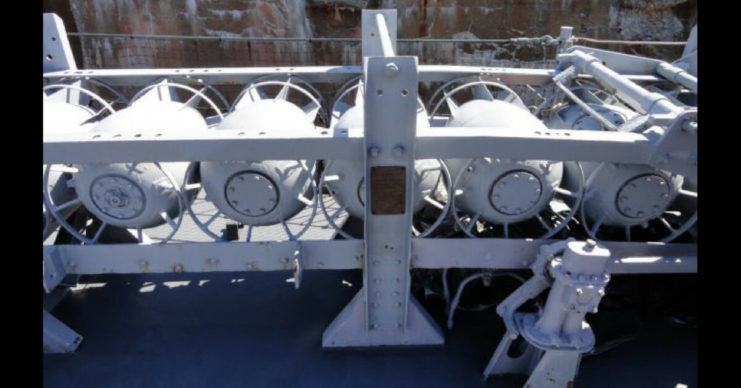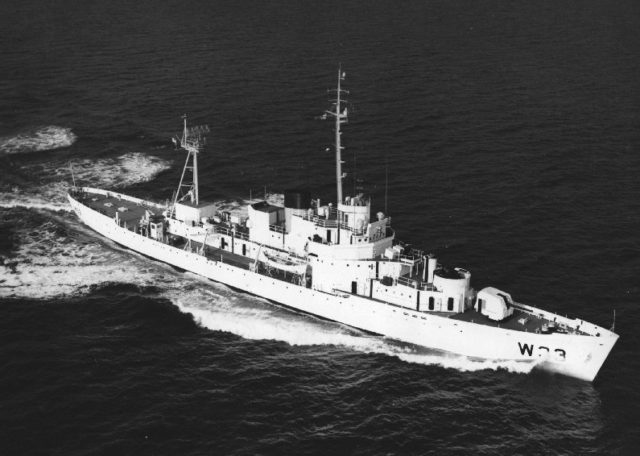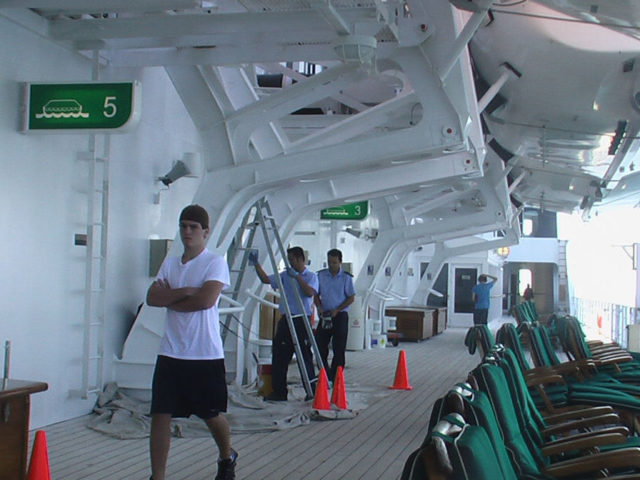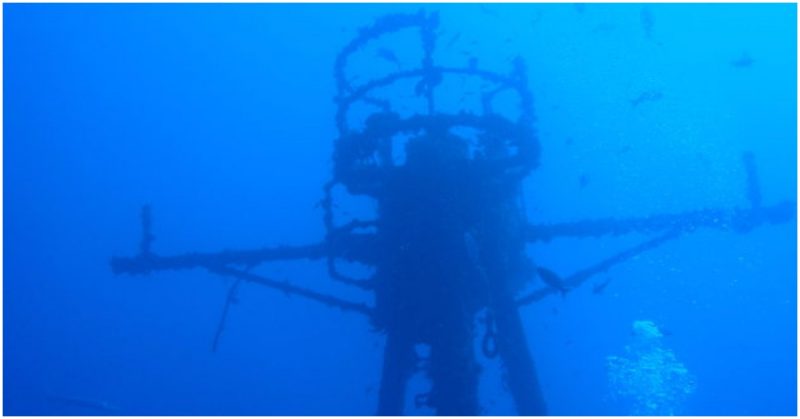Robert William Goehring (no relation to the infamous Nazi, Hermann Goehring) was born on February 12, 1917, in Somerville, New Jersey. He spent a good portion of his high school years training to be a cadet. Upon graduating in 1935, he made a beeline to the US Coast Guard Academy in New London, Connecticut and signed up on August 5.
The promotions came quickly. Lieutenant (junior grade) in 1941, Lieutenant in 1942, and Commander in 1943.
In May 1941 Goehring was assigned to the US Coast Guard (USCG) William J. Duane (WPG-33/WAGC-6/WHEC-33). Measuring 327 feet in length with a beam of 41 feet, she was a Treasury-class Coast Guard cutter used for search and rescue operations, as well as for law enforcement patrol missions.

She had been fitted with anti-aircraft and anti-submarine weapons, in case the US entered the war. They were justified on June 14, 1941, when the German U-boat, U-77, sank the Tresillian (a British tanker) off Greenland. Fortunately, the Duane managed to rescue 46 survivors – Goehring’s first taste of action, but not his last.
February 22, 1942, was bright and sunny. The Duane was patrolling between Newfoundland and Greenland in seas with surface temperatures of about 41°F – enough to cause hypothermia within minutes. The ship was buffeted by gale force winds of six or seven on the Beaufort Scale – roughly 32 to 38 miles an hour; not too serious.

Visibility was good – about six or seven miles. At a little past 2 PM, the gale force winds picked up, registering ten on the Beaufort Scale – between 50 and 63 mph. The sea sent up waves of 25 to 35 feet high, reducing visibility due to the spray.
The Duane set a course of 214° southwest as the storm was coming from the east-northeast. The force of the gale pummeled her stem – the most forward and lowest part of the ship.
Despite the conditions, Lieutenant (still junior grade) Goehring decided to make an inspection of the quarterdeck. He was concerned about the depth charge tracks used for anti-submarine warfare. With the ship heaving about, Goehring wanted to ensure none had been dislodged.
He had gotten as far as the protection around the gun station when the unthinkable happened. It took the lookout, Raymond Gajewski, a second or two to realize what had occurred. A giant wave had hit the ship and smashed over Goehring, but when it had passed, he had vanished. Following the water’s trajectory, the lookout realized that the bobbing thing in the sea was the Lieutenant. The Man Overboard alarm blared out seconds later at 2:10 PM.

Goehring, later stated, “One minute I was on a wet pitching deck, the next I was underwater swimming as hard as I could for the surface.”
When he did surface, he was about a hundred feet away from the ship which was speeding away from him. Goehring yelled, but it did no good.
Then he felt cold. Fortunately, he had followed protocol and had put on a life jacket before going on deck. He knew how to tread water, which significantly raised his core body temperature.

The Duane made a hard turn as the crew threw cargo nets overboard to give Goehring something to grab on to – assuming his fingers were not too numb and unresponsive from the biting chill.
“Mr. Goehring dead ahead!” yelled the quartermaster.
Goehring indeed thought he was dead as the huge ship bore down on him. He vaguely wondered if a wave would bash him against the hull or if he would be squashed as it approached him.
As the Duane reached Goehring, he was plunged into a trough, but another wave lifted him up against the side of the boat and into the waiting arms of the rescue party. Seaman First Class Roy Hamby and Seaman Second Class Donald Layman had each grabbed a leg but pull as hard as they could, their quarry was stuck. His legs had snagged on the safety-line stanchion, leaving him hanging upside down over the side of the cutter. They managed to get Goehring on board.
The ship’s log read: “1418 Secured from man overboard alarm.” The whole incident had taken only eight minutes.
Goehring went on to become a Rear Admiral in 1967. As for the Duane, she was decommissioned in 1985 and sunk two years later off Florida to create an artificial reef. She was added to the US National Register of Historic Places in 2002.
